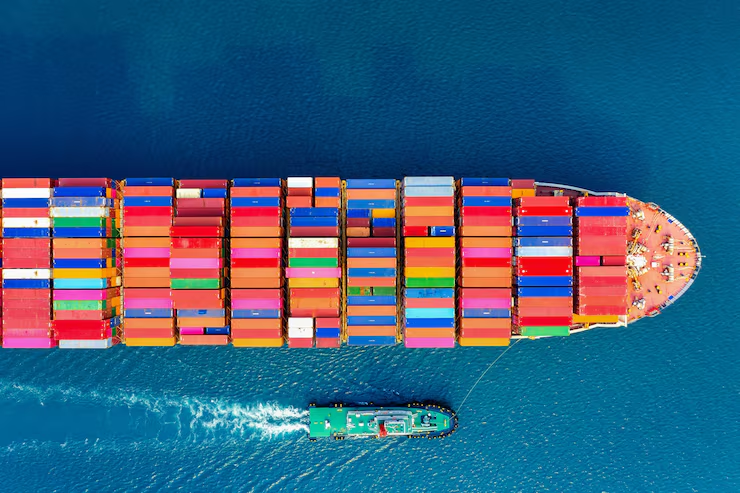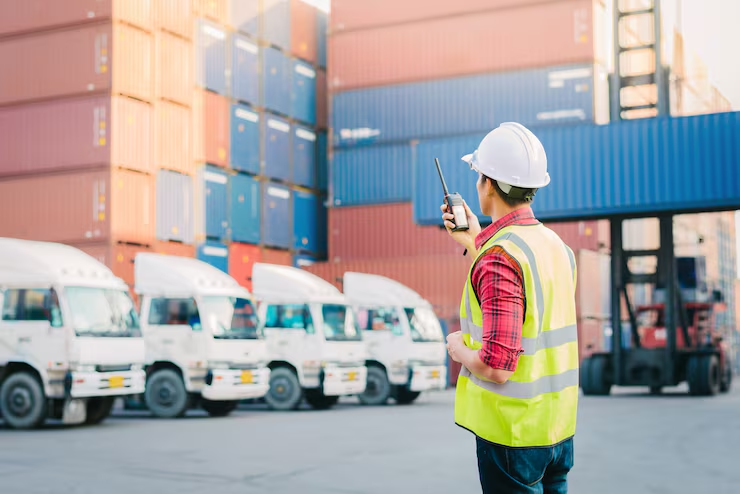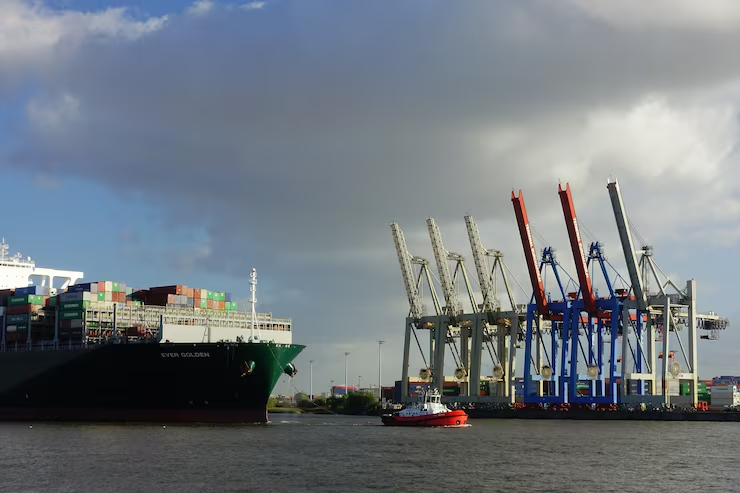Table of Contents
Key Takeaways |
✔ Cross border shipping moves goods between countries with paperwork, customs, and coordination.
✔ Cross border transportation uses trucks, trains, ships, or planes to move freight efficiently.
✔ Cross border freight services cover forwarding, customs, drayage, and warehousing.
✔ Border freight helps expand markets, strengthen supply chains, and cut costs.
✔ Transportation and drayage link long-haul shipping with short local moves.
✔ Cross border freight shipping faces rules, delays, barriers, and extra costs.
✔ Successful freight services need reliable partners, good planning, and technology.
Cross border freight shipping plays an essential role in global trade by allowing businesses to move goods between countries smoothly and efficiently. With the rise of globalization and the need for reliable logistics, the cross border road freight market has been steadily expanding. In fact, the market’s compound annual growth rate (CAGR) is projected to be about 2.47% from 2024 to 2032, reflecting strong demand. This growth is fueled by increasing international trade and the push for faster, more efficient logistics solutions that keep supply chains moving.
Here are the key points to understand about cross border freight shipping, transportation, and drayage services.

What Is Cross Border Shipping?
At its simplest, what cross border shipping is means moving goods from one country to another. This process involves multiple steps, including customs clearance, paperwork, and coordination between carriers. Because every country has its own rules and regulations, shipments must meet specific requirements before they can move across the border.
- Customs Clearance: This is the step where goods are inspected and approved by border authorities to make sure they follow legal and safety rules.
- Documentation: Every shipment needs paperwork such as invoices, permits, or certificates depending on the product type.
- Carrier Coordination: Goods often move through several carriers, so planning is key to ensure they stay on schedule.
Understanding Cross Border Transportation
Cross border transportation is about moving goods across national borders using different types of carriers such as trucks, trains, ships, or planes. It doesn’t only cover long-distance travel but also the smaller movements needed to connect each stage of the journey.
- Trucking: Trucking remains the most common method for cross border transportation, especially between neighboring countries like the U.S., Mexico, and Canada. In fact, U.S. freight shipments with Canada and Mexico reached over $144.8 billion in March 2025—an 8.4% increase from March 2024 and a 35.0% jump compared to 2019, showing just how vital trucking is for cross border trade.
- Rail Transport: Rail is often used for heavy goods or long distances because it’s cost-effective and reliable.
- Air Freight: Air transport is faster but more expensive, mainly used for high-value or time-sensitive goods.
- Ocean Shipping: Ships carry large volumes at lower costs, usually for international trade that requires long-distance travel.
Key Parts of Cross Border Freight Services
Cross border freight services go beyond just moving goods. They include everything needed to make sure products get from point A to point B without unnecessary problems. Service providers handle much of the complexity for businesses, which is especially useful for companies that don’t have experience with international shipping.
- Freight Forwarding: Professionals who plan the best routes, manage paperwork, and coordinate carriers to ensure shipments move smoothly.
- Customs Brokerage: Licensed experts who deal with border authorities and make sure all requirements are met quickly.
- Drayage Services: The short-distance transport of goods, usually between ports, rail yards, and warehouses, to connect different parts of the supply chain.
- Warehousing and Distribution: Temporary storage solutions that also provide sorting, packing, and delivery services.
Why Border Freight Matters for Businesses
Border freight is more than just trucks crossing lines between countries—it’s a key driver for international trade. When handled correctly, it can open new opportunities for businesses of all sizes. Companies can expand into new markets, find better suppliers, and cut costs by sourcing products more efficiently.
- Market Access: Businesses can sell products to customers in different countries, increasing their reach and revenue.
- Supply Chain Flexibility: Having access to multiple suppliers across borders helps reduce risks when one source faces issues.
- Competitive Advantage: Efficient border freight solutions lower costs and improve delivery times, giving companies an edge over competitors.

Role of Transportation and Drayage in Cross Border Shipping
Transportation and drayage services are the backbone of international logistics. While transportation covers the long haul between countries, drayage focuses on the short but critical moves that connect ports, rail yards, and warehouses. Both are equally important to keep goods flowing without delays.
- Drayage Services: They handle container pickups, transfers between carriers, and short-distance deliveries to warehouses or distribution centers.
- Transportation Services: Cover the larger journey, whether by truck, train, air, or ocean, ensuring goods travel safely and on time.
- Coordination Between the Two: Strong communication between drayage and transportation providers avoids bottlenecks and keeps the supply chain moving.
Common Challenges in Cross Border Freight Shipping
Although cross border freight shipping is necessary, it also comes with challenges that businesses should be prepared for. Understanding these helps companies work with service providers to prevent problems.
- Regulatory Differences: Each country has its own import and export rules, making compliance a constant task. Companies often need expert guidance to keep up with frequent policy updates and avoid penalties.
- Customs Delays: Missing documents or incorrect information can cause shipments to be held at the border. These delays can disrupt schedules and increase storage costs for businesses.
- Language and Cultural Barriers: Miscommunication between carriers, brokers, or authorities can create confusion and mistakes. Clear communication tools and bilingual staff help reduce these risks.
- Cost Management: Unexpected fees such as duties, taxes, or storage can increase overall expenses. Careful budgeting and planning for hidden costs help businesses stay on track financially.
Tips for Successful Cross Border Freight Services
To ensure shipments reach their destination safely and on time, businesses should focus on building strong logistics practices.
- Choose Reliable Partners: Work with freight forwarders and brokers who have proven experience in international shipping. A trustworthy partner can anticipate common issues and resolve them quickly before they become costly problems.
- Stay Organized: Keep all paperwork complete and ready before the shipment leaves. Missing or incorrect documents often lead to customs delays that can hold shipments for days.
- Use Technology: Tracking systems and digital platforms help businesses stay updated on shipment progress. These tools also provide transparency for customers and make it easier to manage unexpected changes.
- Plan Ahead: Always allow extra time for customs checks and possible delays. Proper planning gives businesses more flexibility to adjust schedules without harming customer commitments.
Frequently Asked Questions (FAQs)
How much is cross-border shipping?
The cost of cross-border shipping depends on distance, type of goods, size, weight, and transport method. Customs duties, taxes, and fees can also add to costs. For accurate and up-to-date pricing, contact reputable service providers like Drayage Company By Best.
How long does cross-state shipping take?
Shipping across states usually takes one to three days, depending on distance and carrier. Longer routes may take up to a week, with expedited options available for faster delivery.
What are cross-border loads?
Cross-border loads are shipments that move between countries and require customs clearance. They can include raw materials, goods, or equipment, often managed by specialized carriers or brokers.
How does cross country tracking work?
Cross country tracking uses barcodes, GPS, and online platforms to show shipment status. It helps reduce uncertainty and keeps businesses updated on delivery progress.
What is transborder shipping?
Transborder shipping means moving goods across international borders, often between neighboring countries. It involves transport, customs clearance, and meeting trade regulations.

Discover Expert Drayage Solutions in New York City!
Partnering with Drayage Company By Best ensures that every step of cross-border and local freight is handled with care and precision. Businesses in New York City can rely on proven expertise in drayage services that connect shipments from ports, rail yards, and warehouses efficiently. With strong knowledge of regulations and logistics in New York City, every delivery is kept on schedule while avoiding costly delays.
Take the next step today—contact Drayage Company By Best and keep freight moving forward!

